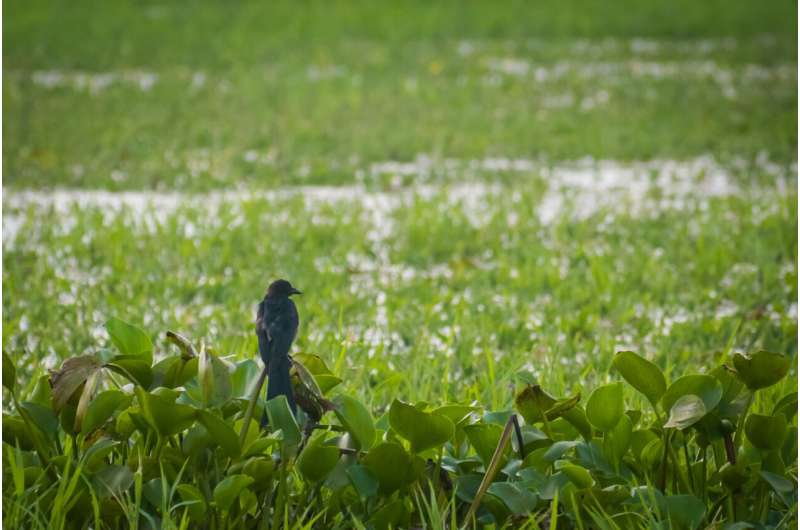This article has been reviewed according to Science X's editorial process and policies. Editors have highlighted the following attributes while ensuring the content's credibility:
fact-checked
reputable news agency
proofread
Invasive species threaten food supply, public health and cost $423 billion a year, report says

Non-native species—displaced either by global trade and travel or by climate change—pose "a severe global threat" to local biodiversity, food security as well as public health, a new report has found.
This "underappreciated, underestimated, and often unacknowledged" threat from invasive alien species imposed a global economic cost of more than $423 billion annually in 2019 and played a key role in the majority of plant and animal extinctions, according to a report from the Intergovernmental Platform on Biodiversity and Ecosystem Services published Monday.
More than 37,000 alien species have been introduced worldwide as a result of human activity—transported from one location to another in ships' ballast water, for instance.
Of these, 3,500 were found to be harmful and invasive as they wreaked havoc on local animal and plant species.
European shore crabs have damaged commercial shellfish beds in New England and Canada while Caribbean false mussels have displaced clams and oysters in the Indian Ocean, the report said, citing instances where food supply chains were disrupted.
Mosquito species, migrating farther north as the planet warms, have spread malaria, Zika and West Nile fever to previously unaffected areas, underscoring the public health risk.
As global warming continues to make new areas habitable for alien species and international trade and travel returns to prepandemic levels, countries need to bolster border biosecurity, strictly enforce import controls and deploy early detection systems, the report says.
Policymakers also need to double down on the "vital" Kunming-Montreal Global Biodiversity Framework, which aims to curb the invasion of aggressive alien species by at least 50% by 2030.
"Invasive alien species have been a major factor in 60% and the only driver in 16% of global animal and plant extinctions that we have recorded," said professor Anibal Pauchard, co-chair of the Assessment. Among the alien species, around 6% of plants, 22% of invertebrates, 14% of vertebrates, and 11% of microbes were known to be invasive, it added, pointing out that indigenous communities, and those dependent on nature for livelihoods, were most at risk.
The most damaging effect was recorded on islands. The report found that the number of alien plants exceeded native plants on more than 25% of all islands. Land, particularly in forested and cultivated areas, was more vulnerable to these invasive species compared to freshwater and marine habitats.
"It would be an extremely costly mistake to regard biological invasions only as someone else's problem," Pauchard said. While the damage inflicted varies from place to place, "these are risks and challenges with global roots but very local impacts, facing people in every country, from all backgrounds and in every community."
2023 Bloomberg L.P.
Distributed by Tribune Content Agency, LLC.


















